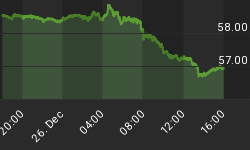This week investor sentiment is neutral. The bearish sentiment (i.e., bull signal) of the past three weeks has dissipated. Going forward, equities will need to rely upon their own merits to score gains. In other words, as bears have turned into bulls, sentiment will be less of a factor in any price appreciation.
The "Dumb Money" indicator is shown in figure 1. The "dumb money" looks for extremes in the data from 4 different groups of investors who historically have been wrong on the market: 1) Investor Intelligence; 2) Market Vane; 3) American Association of Individual Investors; and 4) the put call ratio.
Figure 1. "Dumb Money"/ weekly
As you can see, the "dumb money" indicator has moved out of the extreme bearish zone (i.e., bull signal) and it is now neutral. This is typical as prices move higher. The stock market is recruiting more believers (i.e., bulls). It takes bulls to make a bull market so we need to see more bulls. This is one interpretation for the indicator. Another interpretation is that stocks will need to make price gains on their own merit (i.e., fundamentals) as sentiment is no longer a factor.
Looking forward, two scenarios are possible: 1) the market continues its winning ways in which case the indicator will move higher as more bears are converted to bulls; or 2) the price gains will level out in which case the indicator will remain stuck in the neutral zone. In scenario #1, the market and current intermediate term price cycle will top out when there is extreme bullish sentiment (i.e., bear signal). In scenario #2, the rally will likely churn along for the next four to six weeks before rolling over and retesting the March, 2009 lows. As I believe that the current rally is a counter trend rally within an ongoing bear market, I am expecting the latter scenario. I would be happy if I am wrong.
The S&P500 gained about 20% from the March 6 low to the March 19 high; this was over 9 trading days! On a close to close basis, the move has been 12% or a whopping 300 plus percent annualized. It is my guess that the best part of the move is behind us, and we are likely playing for a retest of the March 19 highs (which is only 4.5% above us) or possibly the key resistance levels between 820 and 830 on the S&P500 (which is approximately 7.5% away). You will need to be nimble to make money.
For completenss sake, I have included the "Smart Money" indicator in figure 2. The "smart money" indicator is a composite of the following data: 1) public to specialist short ratio; 2) specialist short to total short ratio; 3) SP100 option traders.
Figure 2. "Smart Money"/ weekly
















